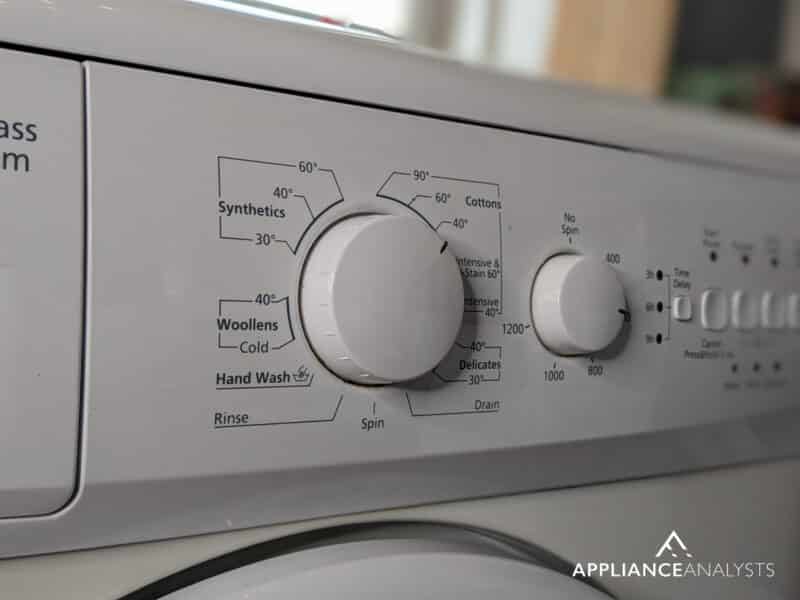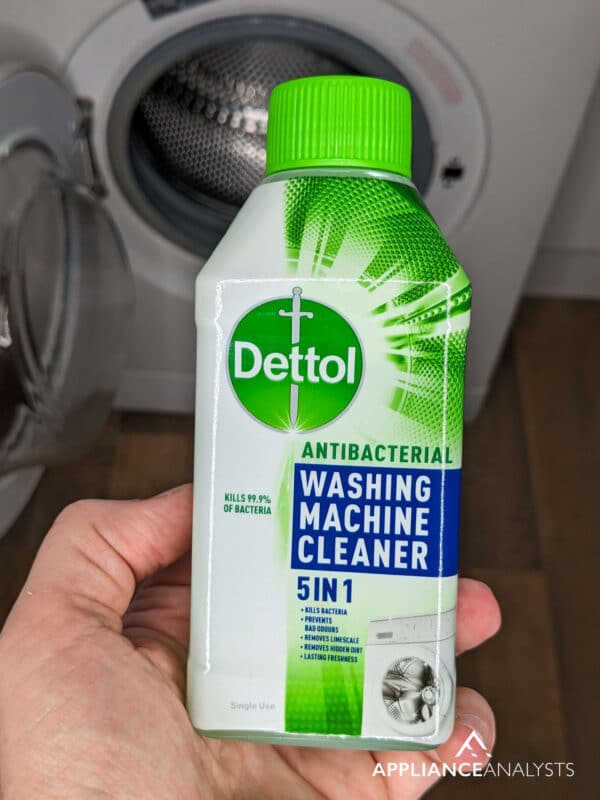We've independently reviewed this article to make sure it's as accurate as we can make it.
To find out more about our article creation and review process, check out our editorial guidelines.
Is your washer leaving black spots on your clothes?
That’s sucks! Opening your washer only to find that your clothes are covered in black spots can be quite frustrating.
Luckily, you’ve come to the right place to fix the issue.
To keep your washer from leaving black spots on your clothes, you’ll need to use the right amount of detergent and fabric softener, experiment with settings, and deep clean your machine. If the issue persists, please check the water valve.
Read on to fix the issue today!
Why trust us? This article was written by Craig Anderson and James Blackford.
Craig has helped thousands of other homeowners repair their appliances since 2016.
James is one of our resident appliance experts with over 16 years of experience. He currently works as a Master Technician for SquareTrade, and runs his own appliance repair business.
Washer Leaving Black Spots on Your Clothes? Try This
In this section, I’ll guide you through the different reasons that can explain why your washer is leaving black spots on your clothes and provide various solutions.
Are you ready? Let’s get started!
#1 Use the Right Amount of Product
If your washer is leaving black spots on your clothes, you’ll need to ensure that you’re using the right amount of products.
While using too much detergent can give the impression that it will clean your clothes better, it actually has the opposite effect. Overusing detergent can leave behind a residue on your clothes, leading to stains.
Similarly, overfilling the fabric softener dispenser can lead to premature dispensing and leave black stains on your clothes.
Note: Fabric softeners have highly concentrated formulas. I find that pouring them directly onto clothes can result in stubborn black spots.
To ensure you’re using the right amount of detergent and fabric softener, read the manufacturer’s manual and the product labels. They typically provide filling instructions to help you avoid detergent residue and the associated stains.
Using a measuring cup and adjusting the product amount based on the load size is also important. For lighter loads, use a smaller amount of product.

If you’ve accidentally used too much detergent or fabric softener, simply run an extra rinse cycle.
If the issue persists, changing the products you’re using is also recommended. For example, if using powder, switch to liquid and vice-versa.
#2 Experiment With Settings
If your washing machine leaves black spots on your clothes, please ensure you’ve selected the right setting.
Not all laundry loads are the same. Using a regular wash setting for heavily soiled items can explain why they have stains or black spots.
Try experimenting with different settings. For stained clothes, my usual advice is to use a heavy-duty cycle or hot water.

However, remember that before experimenting with settings, it’s essential to read the care label on your clothing. Selecting a heavy-duty cycle for delicate items can cause severe damage.
So, what should you do if delicate clothes are heavily stained? First, you should pre-treat the stained area. Apply a small amount of gentle stain remover and carefully rub it with a soft cloth or an old toothbrush. Then, either hand wash the item or select a delicate setting on your washer.
Please remember to empty your pockets when loading your washer. Accidentally leaving items like chapstick or other oily products in your pockets can result in spots on your clothes.
#3 Deep Clean Your Washing Machine
In my experience, a dirty or moldy washing machine can also be the reason why your clothes end up with black spots.
Over time, dirt, product residue, and mold can accumulate in your washing machine and form a sticky residue that can transfer onto your clothes, leading to black spots.
Luckily, deep cleaning a washer is super simple. You’ll just need to:
- Empty your washing machine and select the cleaning setting. You can also choose the hottest setting, longest cycle, and largest load.
- As the washer fills, add 3 cups of vinegar and 1/2 cup of baking soda. These natural ingredients help break down grime and neutralize bad odors.
- Once the cycle has finished, clean the detergent and fabric dispenser. Simply scrub them with vinegar or warm, soapy water.
- If you have a front-load washer, clean the rubber gasket around the door with vinegar or soapy water. Then, dry it with a soft cloth or paper towel to prevent mold growth. It’s also important to clean the drain filter.
You can also run multiple cleaning cycles using washer-cleaning tablets or sanitizers.

If deep cleaning your washing machine doesn’t solve the issue, then the water inlet valve is probably malfunctioning. Read on to learn more!
#4 Inspect the Water Inlet Valve
If you’ve tried all the fixes mentioned in this article, but your washer keeps leaving black spots on your clothes, it’s time to inspect the water inlet valve.
The water inlet valve is responsible for controlling the flow of water into the washing machine. Unfortunately, if the water valve malfunctions, it can cause the fabric softener to release early and sit on your clothes for too long, resulting in black spots.
In such cases, you’ll need to replace the water valve. Here’s how to do it:
- Unplug your washer from its power source and turn off the water supply.
- Place a bucket or some towels on the floor and disconnect the water hoses.
- Remove the back panel to access the water valve. You’ll need a screwdriver.
- Carefully disconnect the wires connected to the water valve.
- Remove the water valve from the washer.
- Install the new water valve and reconnect the wires.
- Reassemble your washer.
Once you’ve followed the instructions above, please plug your washer back into its power source and start a cycle.
Wrapping Up: Preventing Black Spots on Your Clothes
That about covers it! Hopefully, now you know how to prevent your washer from leaving black spots on your clothes.
Remember to use the right amount of detergent and fabric softener and ensure you’ve selected the right setting. Don’t forget that it’s also important to deep clean your washing machine and check the water valve.
Thank you so much for taking the time to read this guide. If you ever experience a different issue while using your washer, please check out our related posts below.
Good luck!








